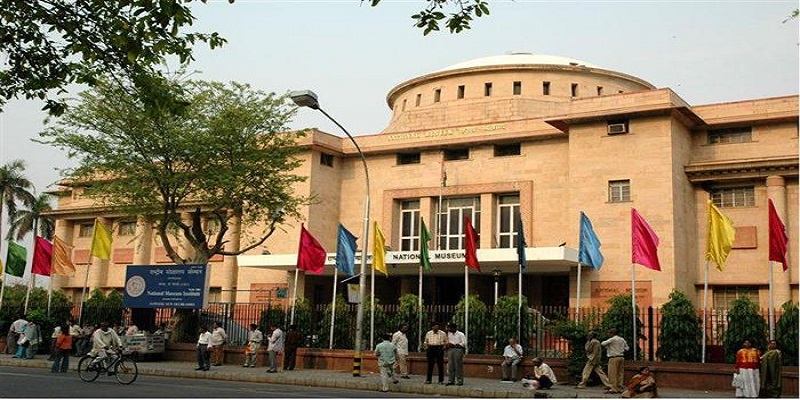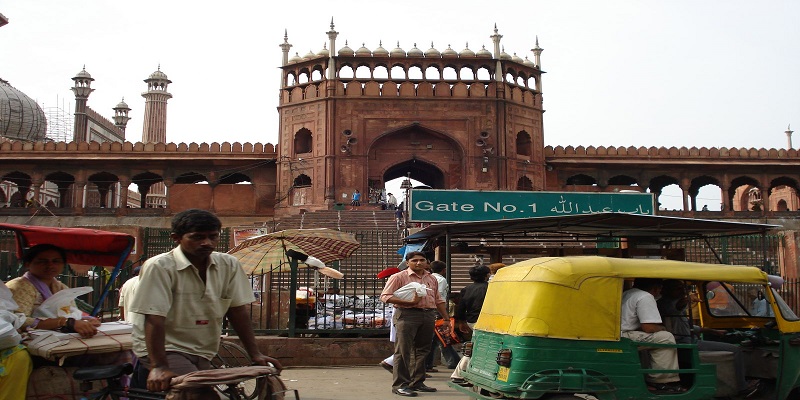Tourist Places to Visit in Delhi
NEW Delhi, India's national capital is a fusion of the ancient and the modern. The fascinating city reflects a rich culture, boasts of amazing architecture and is seeped in history. It is also a vibrant metropolis, with modern, well-planned office, commercial and residential complexes and colourful bazaars. Interestingly, the capital also generates a mesmerising charm with its well composed and spacious streets under the shade of beautifully lined avenues of trees and tall and imposing government buildings. Explore the wonders of Delhi with a home stay in the city.
Delhi has behind it a great history. Delhi is also known as the heart of India. It is the historic capital of India, where many empires rose and fell before dawn. Delhi has a 5000 years old history. Delhi was the focal point for the first war of independence in 1857. The history of Delhi began with the creation of Indraprastha by the Pandavas. Delhi is full of historical buildings, heritage sites temples etc. The country's finest museums, whether it is the National Museum, the Craft Museum, the Rail Museum, or the Museum of Natural History and Science, are all in Delhi. Every state of India has its own emporium at New Delhi, where a tourist can buy or select among handicrafts, textiles and jewelry of a particular region.
Lotus Temple

Lotus Temple
The Lotus Temple is a Bahá'í House of Worship, situated in South Delhi and shaped like a lotus. It was built by the Bahá’í community.
Connaught Place

Connaught Place
Connaught Place, built in 1931, is one of Delhi's most popular shopping centres. There is nothing that one cannot buy here. It also has several eating-houses. The state emporia buildings are also located in this area so are the head offices of major banks, airlines and other such things of importance to the tourist. The complex, popularly referred to as CP, is an important meeting point for all sections of people and is something.
Gurdwara Bangla Sahib

Gurdwara Bangla Sahib
One of the many Gurdwaras in Delhi, Gurdwara Bangla Sahib is the most visited one in the Delhi area. Millions visit this Gurdwara from all over the world and of all religions to offer their prayers at this elegant yet historical Gurdwara in Delhi. This is not just a sacred Sikh shrine, but also very important to many Hindus
Raj Ghat

Raj Ghat
On the bank Yamuna River, which flows past Delhi, there is Raj Ghat, the final resting place of Mahatma Gandhi, the father of the nation. It has become an essential point of call for all visiting dignitaries. Two museums dedicated to Mahatma Gandhi's life are also situated nearby.
Shanti Van

Shanti Van
Lying close to the Raj Ghat, the Shanti Vana (literally, the forest of peace) is the place where India's first Prime Minister Jawaharlal Nehru was cremated. The area is now a beautiful park adorned by trees planted by visiting dignitaries and heads of state.
Jama Masjid

Jama Masjid
The Masjid-i-Jahan Numa, commonly known as Jama Masjid, is the principal mosque of Old Delhi. Commissioned by the Mughal Emperor Shah Jahan and completed in the year 1656, it is one of the largest and best known mosques in India.
Sansad Bhavan

Sansad Bhavan
Sansad Bhavan or the Parliament of India is a circular building designed by the British architects Sir Edwin Lutyens and Sir Herbert Baker in 1912-1913. Construction began in 1921, and in 1927 the building was opened as the home of the Council of State, the Central Legislative Assembly, and the Chamber of Princes.
Akshardham Temple

Akshardham Temple
The Akshardham Temple complex in Delhi was opened to the public on November 8, 2005. It reflects the colorful Hindu religion. The Delhi Akshardham is an imitation of the Akshardham in Gandhinagar, Gujarat, India. Colossal. This is the word which comes in mind when we talk of the famous Swaminarayan temple in Delhi, as it is also known.It is set in a vast 100 acre site. It has been built on the banks of the serene River Yamuna and has sprawling lush manicured lawns adorned with water fountains and carved pavilions. A staggering 2 billion was spent on the construction of this grand place of worship.The beautiful Akshardham mandir was built without steel and is entirely composed of sandstone and marble.
Tughlaqabad Fort

Tughlaqabad Fort
When Ghazi Malik founded the Tughlaq Dynasty in 1321, he built the strongest fort in Delhi at Tughlaqabad, completed with great speed within four years of his rule. It is said that Ghazi Malik, when only a slave to Mubarak Khilji, had suggested this rocky prominence as an ideal site for a fort. The Khilji Sultan laughed and suggested that the slave build a fort there when he became a Sultan. Ghazi Malik as Ghiyasuddin Tughlaq did just that: Tughlaqabad is Delhi's most colossal and awesome fort even in its ruined state. Within its sky-touching walls, double-storied bastions, and gigantic towers were housed grand palaces, splendid mosques, and audience halls.
National Museum

National Museum
The National Museum, New Delhi is the largest museum in India. It holds variety of articles ranging from pre-historic era to modern works of art. It is run by the Ministry of Culture, part of the Government of India. The museum is situated on the corner of Janpath and Maulana Azad Road.
Salimgarh Fort

Salimgarh Fort
Salimgarh Fort, which is now part of Red Fort complex, was constructed on an island of the Yamuna River in 1546. But a gate called the Bahadur Shahi Gate for entry into the Fort from the northern side was constructed only in 1854-55 AD by Bahadur Shah Zafar, the last Mogul ruler of India. The gate was built in brick masonry with moderate use of red sandstone.
Chandni Chowk

Chandni Chowk
Chandni Chowk, a main marketplace in Delhi, keeps alive the city's living legacy of Shahjahanabad. Created by Shah Jahan the builder of Taj Mahal, the old city, with the Red Fort as its focal point and Jama Masjid as the praying centre, has a fascinating market called Chandni Chowk. Legend has it that Shah Jahan planned Chandni Chowk so that his daughter could shop for all that she wanted.
Laxminarayan Temple

Laxminarayan Temple
Also called the Birla Mandir, the Laxminarayan Temple was built by the Birla family in 1938. Along with the temple itself, the name 'Laxminarayan Temple' encompasses a large garden with fountains behind it. The temple attracts thousands of devotees on Janmashtami day, the birthday of Lord Krishna.
Red Fort
Red Fort
The decision for constructing the Red Fort was made in 1639, when Shah Jahan decided to shift his capital from Agra to Delhi. Within eight years, Shahjahanabad was completed with the Red Fort-Qila-i-Mubarak (fortunate citadel) - Delhi's stourh fort - ready in all its magnificence to receive the Emperor. Though much has changed with the large-scale demolitions during the British occupation of the fort, its important structures have survived.
Qutub Minar

Qutub Minar
The Qutub Minar is located in a Mehrauli in South Delhi. It was built by Qutb-ud-din Aibak of the Slave Dynasty, who took possession of Delhi in 1206. It is a fluted red sandstone tower, which tapers up to a height of 72.5 metres and is covered with intricate carvings and verses from the Qur'an. Qutub-ud-din Aybak began constructing this victory tower as a sign of Muslim domination of Delhi and as a minaret for the Muslim priest, the muezzin, to call the faithful to prayer.
